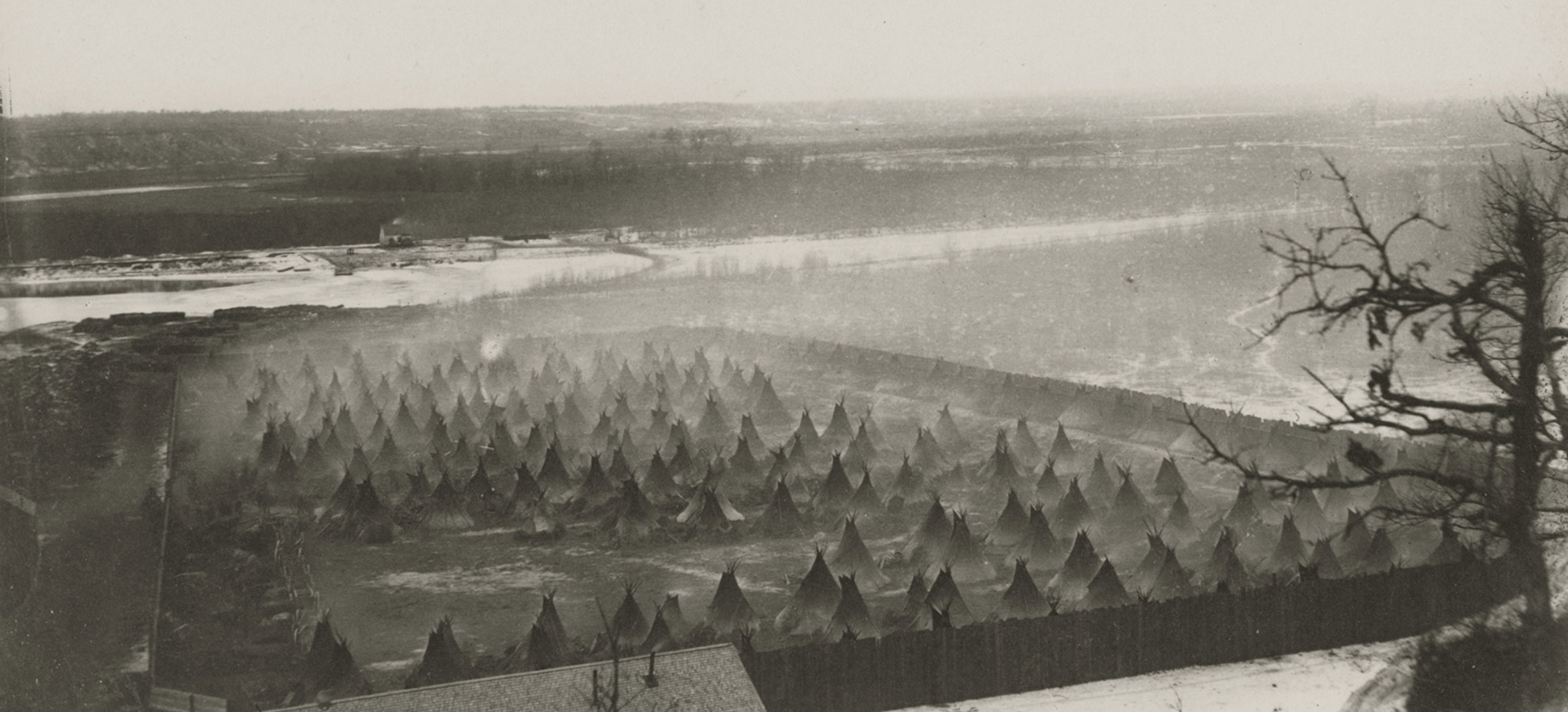
A concentration camp for Dakota people below Fort Snelling, winter 1862-3.
Click here to view the digital project 'Patterns of Removal'.
Connecting the Incarceration of American Indians to the History of Colonialism in Minnesota
Education - War - Policy - Diplomacy - Urbanization - Incarceration.
All are integral parts of American culture, yet they are also threads in the process of removal woven throughout the fabric of our society, contributing to the forced movement of Native people in the United States and the erosion of tribal sovereignty. This project breaks down the history of five American social institutions, showing how they contributed to the removal of American Indians, in order to show how the new institution of mass incarceration follows this same tradition.
American Indians in Minnesota are incarcerated at a higher rate than any other racial or ethnic group in the state, 15% higher than African Americans and an incredible twelve times higher than the white population. Native peoples across the country are consistently put behind bars at high rates and this disparity is even more pronounced in Minnesota and other states in the Upper Midwest. Unless an individual ends up in a tribally run jail, the implementation of criminal justice policies almost always result in incarceration away from local communities and cultures. In many ways this process reflects removal policies of the 19th and 20th centuries.